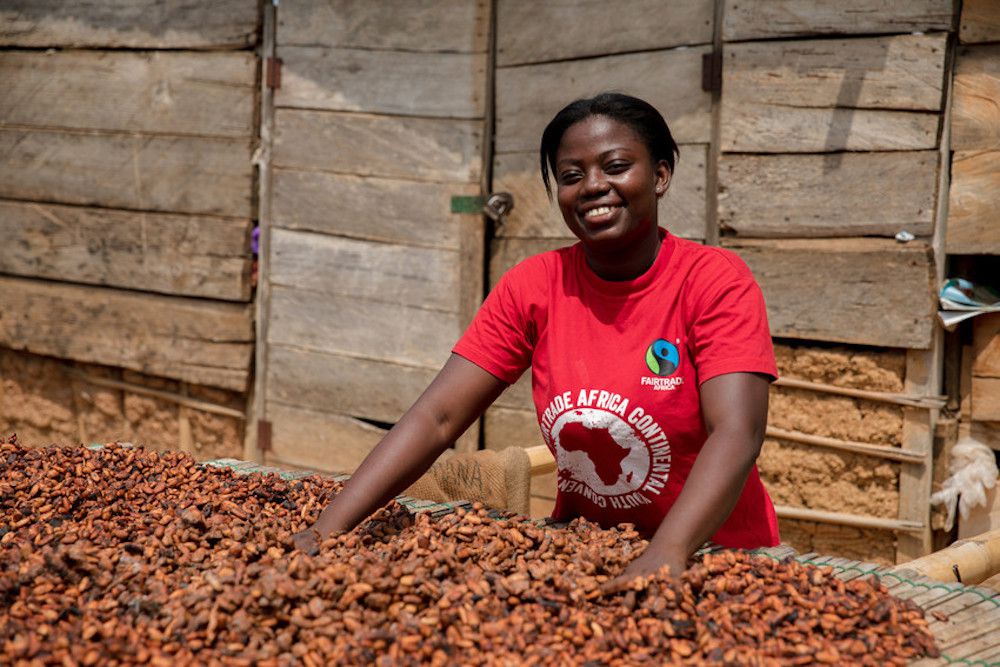Many farmers and traders still recall the fervid interest that surrounded cocoa last year. No investment brought more glee for its investors than the perennial tree crop, which was the best-performing commodity in 2024. Cocoa prices soared by an astonishing 132%, even surpassing Bitcoin’s 121% within the same period.
After an astronomical rally that saw its price surge to $12,931 per metric tonne last December, cocoa is leading one of the steepest declines in the agricultural market in 2025. The crop has shed as much as 50% of its record value.
The boom in cocoa prices can be chalked up to a variety of factors affecting the cocoa belt—Ivory Coast, Ghana, Cameroon and Nigeria—which sits at the heart of an industry that’s worth more than $100 billion.
West Africa is home to around 70% of the world’s cacao trees, whose pods are harvested into cocoa and ultimately shipped to Europe and North America, which are the largest consumers.
However, as weather conditions changed—amidst plant diseases such as the cacao swollen shoot virus—in Ivory Coast and Ghana, which collectively account for more than 60% of global cocoa production, this sparked fears of a shortfall in global supply.
Overall, global cocoa production did drop by about 14% in the 2023-2024 season.
Ivory Coast’s regulator, Conseil du Cafe-Cacao, restricted exporters without local processing companies from purchasing cocoa beans, with exporters rejecting cocoa beans due to quality concerns. Consequently, low supply wrought by climate disruptions inflated market prices.
If the price spike enriched farmers and investors, it came at a painful cost to consumers. Chocolate lovers worldwide paid more for their indulgence. In the United States, which imports over 10% of the world’s supply, retail chocolate prices were one-fifth higher this Valentine’s Day than they were last year.
In the same vein, a 2024 survey of a consumer group in the UK found that chocolate products were the category with the highest average annual inflation rate in grocery stores.
The persistent increase in cocoa prompted chocolate producers to turn to products with less cocoa or to substitute ingredients altogether.
Last year, food giant Nestlé launched a hazelnut flavour to its British Aero range of chocolate bars.
Dubai Chocolate, which became hugely popular on social media last year, blends pistachio, tahini and kadayif—a cheesy saccharine dessert native to North Africa and the Middle East.
The high prices of cocoa dampened appetite for chocolate as much as it hurt chocolatiers.
Beyond confectionery, the high prices had knock-on effects on industries like cosmetics and pharmaceuticals, where cocoa derivatives play a vital role.
Now, following a protracted season of severe drought and rainfall, climate scientists expect weather conditions to become more stable, at least momentarily, for the next couple of years.
Based on this optimistic weather forecast, cocoa yields are expected to climb during this period. What’s more, state interventions to contain pest diseases are looking promising.
In Ghana, for example, cocoa growers anticipate a rebound in yields with enhanced disease management strategies. To boost cocoa supplies and sales, both Ghana and Ivory Coast have increased the amount they pay farmers for their cocoa beans. These incomes are designed to encourage farmers to sell through official channels rather than to smugglers.
Elsewhere, in Latin America, new cocoa plantations are emerging, although not at a pace quick enough to offset the pressures on West Africa.
Based on these developments, the International Cocoa Organisation, in February, projected a global cocoa surplus of 142,000 megatonnes for the 2024-25 harvest season. This will mark the first surplus in four years. It also projects increased production for the new season.
Meanwhile, the cocoa price has extended its free fall, dropping this October to $5,900, its lowest since February 2024. J.P. Morgan, an American bank, expects the price to hover around $6,000/tonne in the short term.
Similarly, many analysts reckon that the price of cocoa will not return to its 2024 highs, given its improved supply outlook. Even amidst declining prices, chocolate on store shelves remains expensive.
Analysts blame this on the surge of cocoa prices in the last couple of years. Production costs remain elevated, and chocolatiers are still rebuilding profit margins squeezed by last year’s crisis.
Cocoa’s volatile ride
In the end, cocoa’s story underscores the delicate balance between nature, trade, and consumer demand. The recent boom and bust may serve as a cautionary tale: that global commodities, however sweet their promise, remain at the mercy of climate swings and market psychology.
For farmers, investors, and chocolate lovers alike, the bitter aftertaste of cocoa’s volatility is a reminder that in the world of commodities, what goes up must eventually melt down.
Summary not available at this time.






